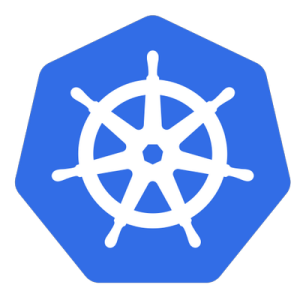What is our primary use case?
Our organization has an extensive online platform available to our customers, who are geographically spread between the United States, Japan, and other parts of the Far East. The platform's backbone comprises around 120 microservices, and we use Kubernetes to host most of them.
What is most valuable?
The Desired State Configuration is a handy feature; we can deploy a certain number of pods, and the tool will ensure that the state is maintained in our desired configuration.
The features regarding scalability are also valuable. As part of our DevOps, I am involved in some enhancements where we plan to use pod scaling and the available AKS node scaling features. These are available native to AKS, but we do have to set up some matrices to control scaling and define scaling rules. The fact that we can achieve that dynamically is a significant part of why we use the solution.
Kubernetes is an excellent platform for hosting microservices, especially container-based microservices.
What needs improvement?
The solution has some issues regarding availability during high loads. Worker nodes are sometimes unavailable, affecting the overall availability of the applications. This is a bug or underlying problem with the tool, and Azure and other providers are looking into improving this by releasing new versions of Kubernetes that fix some of the platform's issues.
We usually encounter a few bugs, and as part of our partnership with Microsoft, we tend to share that data and receive active support from them. They are constantly improving the product.
Many options are available from third-party vendors and open-source providers that build upon AKS, or Kubernetes in general, especially regarding monitoring and telemetry. Perhaps incorporating similar features into the native solution would be a good improvement. However, the solution, with the core engine and the supporting ecosystem of open-source projects and other available features, covers the entire spectrum of what we need to do.
For how long have I used the solution?
I've worked on different projects using Kubernetes as an application hosting platform for two or three years.
What do I think about the stability of the solution?
The product is stable; it has benefited from a few years of worldwide production-level experience and customer feedback. That's the base, open-source version of Kubernetes. There are numerous vendors with their own flavors of the solution, like AKS and Amazon, which are also pretty stable. Rancher isn't open source, but it has many features that make it easy to maintain, so it's also stable.
What do I think about the scalability of the solution?
We have around 2000 total users, including end users and DevOps users.
How are customer service and support?
I have contacted technical support on a couple of occasions.
How would you rate customer service and support?
Which solution did I use previously and why did I switch?
We used a version of Rancher Kubernetes to manage an on-premise instance of the solution. I'm very familiar with the tool, but I'm not up to date with any of the new offerings available with Rancher.
How was the initial setup?
AKS and other managed Kubernetes instances are quite easy to set up. However, depending on the project requirements, it can become more complex.
For example, a previous project I worked on had some stringent rules around networking policies, traffic routing, etc. The tight security policies meant we had to use a highly customized virtual network upon which the AKS instances were hosted. We went with a Kubernetes networking model, which might have been called a container networking model. This model required each pod to be provided with an IP that was part of the actual IP range within a network, so pods had real IP addresses. This kind of implementation becomes more complex.
In terms of native setup, Kubernetes has its own internal networking system and cluster IPs, which facilitates easy pod scaling, so native implementation is relatively easy. When projects have higher security requirements, the implementation gets a little more complex, but it's still much more straightforward than a self-hosted cluster.
An entirely self-hosted Kubernetes cluster is the most complex. We have to set up every aspect, including the master nodes, worker nodes, and networking, which requires dedicated Kubernetes administrator resources. We previously implemented an on-premise Kubernetes cluster, and it takes significant effort and dedicated resources to manage that sort of cluster.
What's my experience with pricing, setup cost, and licensing?
I would say the solution is worth the money, but it depends on the required workloads, the type of workload, and the scaling requirements etc.
Ultimately, we're using the computing power on the nodes, so they need to be appropriately scaled according to the workload. With intensive workloads requiring large machines, I'm curious to know how much savings one would have purely in hardware cost compared to using standalone VMs.
What other advice do I have?
I would rate the solution an eight out of ten.
The solution is deployed on a private virtual network belonging to our organization and in the Azure cloud. The interconnections with on-premise are purely through VPN gateways and so on.
Regarding POC-type projects, I recommend using a trial version of Kubernetes with Rancher or a very lightweight configuration of AKS. It's essential to consider the factors involved in analysis and precisely what you want to find out. Based on that, tests can be conducted to determine the solution's available benefits. It also depends on the kind of workload; if that consists of microservices that can be easily containerized, then it's worth investing some time and effort into AKS. POCs can generate some numbers regarding costs, performance, scalability etc.
If the setup is well designed and the appropriate workloads are shifted to Kubernetes, there's a lot of flexibility available for DevOps to scale their applications. There are also many available monitoring, telemetry, service discovery, and service mesh features. If the architecture is well-planned and devised, the Kubernetes platform can provide significant benefits.
Which deployment model are you using for this solution?
Private Cloud
If public cloud, private cloud, or hybrid cloud, which cloud provider do you use?
Microsoft Azure
*Disclosure: My company does not have a business relationship with this vendor other than being a customer.








